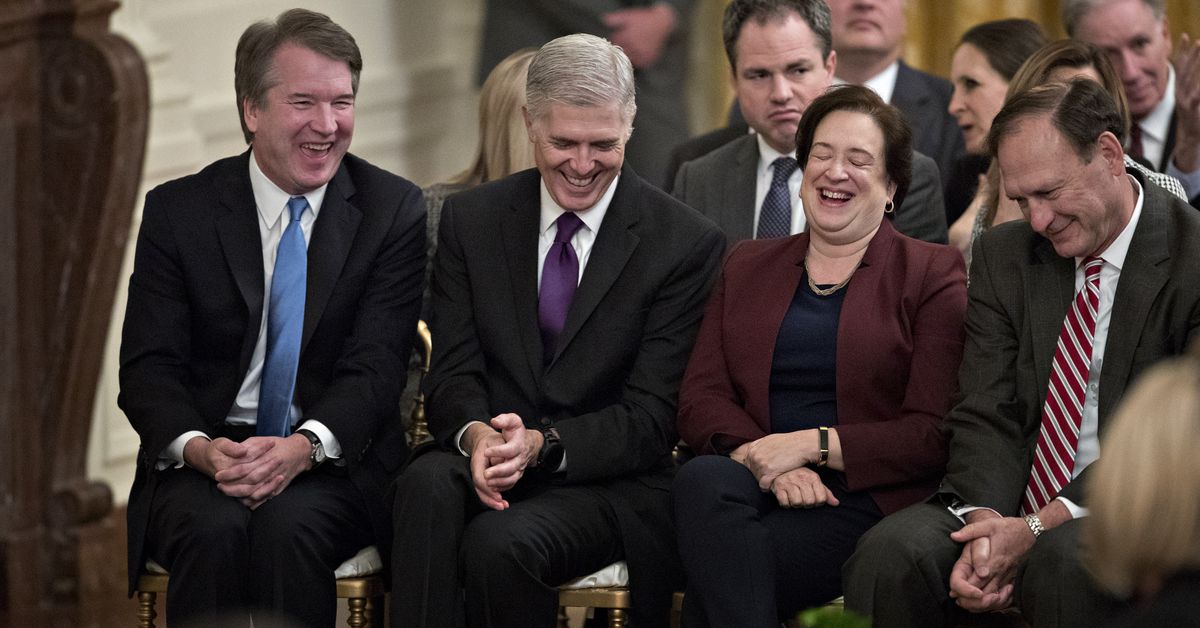When you cover this Supreme Court for a living, it is tempting to fall into despair.
The Court has spent the last few years relitigating long-settled fights over abortion and affirmative action. It consistently rules that the rights of LGBTQ Americans, women using birth control, and even people who don’t want to catch a deadly disease must give way to the whims of the Christian Right.
Under its three-year-old Republican supermajority, the Court took a decidedly post-legal turn. It routinely relies on fabricated legal rules, such as the so-called major questions doctrine, to veto liberal policies like President Joe Biden’s student loan forgiveness program or to undermine environmental protections.
Its guns decision in New York State Rifle v. Bruen (2022) is an incompetent train wreck, which has baffled lower court judges and produced appalling results — including an appeals court decision holding that a law prohibiting individuals from “possessing a firearm while under a domestic violence restraining order” is unconstitutional.
And yet, despite all of this, I am far more optimistic about the future of the United States than I was a year ago, and a big reason why is the Supreme Court’s behavior over the last several months.
When the Court opened its latest term last October, my level of alarm was about a 13 out of 10. The GOP-appointed justices had just completed an orgy of conservative grudge settling, including its decision overruling Roe v. Wade. Worse, the Court planned to hear new cases that could legalize racial gerrymandering, gut Medicaid, and potentially even destroy US democracy altogether.
A little less than a year later, my level of alarm is down to a nine. The Court’s last term gave anyone to the left of Brett Kavanaugh no shortage of outrages, but it left Medicaid intact. It shut down an argument that many of Donald Trump’s nativist appointees to the lower courts used to seize control of federal immigration policy. And, on the crucial issue of voting rights, the Court handed down two decisions that give real hope that, no matter how else these justices might interfere with federal policymaking, they will preserve the people’s right to elect officials that the justices themselves do not want to see in office.
I want to be precise about the argument that I’m making. If you are angry at the Supreme Court, you are right to be angry. Many of this Court’s decisions are completely lawless — such as the Court’s recent decision in Biden v. Nebraska (2023), which ignored a federal law that unambiguously authorized Biden’s student loan forgiveness program. They demand anger. And that anger isn’t just righteous, it is useful.
But I also want to counsel against despair — that is, I want to counsel against the absence of hope.
The Court’s GOP-appointed majority is starting to draw some fences around the conservative legal project. The Court appears unwilling to attack entrenched parts of the American welfare state. It smacked down a Trump judge who attempted to ban the abortion drug mifepristone. It has rejected legal arguments that would devastate the US economy or threaten its national security.
And, most importantly, the Court is now signaling that it may preserve America’s ability to hold free and fair elections (or, at least, to hold elections that are as free and fair as possible in a nation with an Electoral College and a malapportioned Senate).
If it holds to that, there’s a very real chance that liberals and centrists can defeat this increasingly unpopular Court the old-fashioned way — by consistently electing presidents and senators who will fill the Court with justices who will relegate the works of Samuel Alito to the anti-canon.



Fucking troll lol
Hey bud. Can you tell me any other government appointed positions that are lifetime, and can’t be changed by the elected position that appointed them in the first place? I’ll wait.